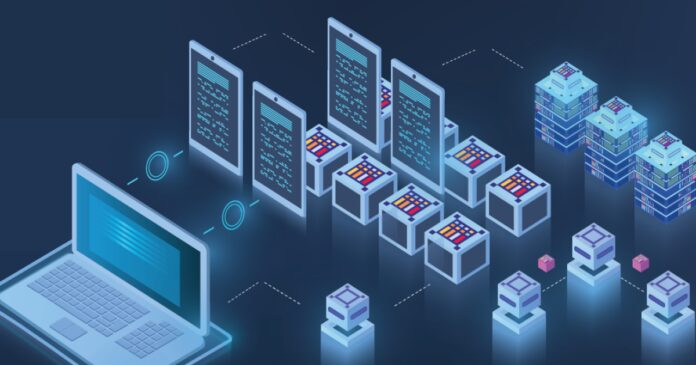
The concept of decentralized circulation of digital money, proposed by Nakamoto back in 2008, was implemented soon enough. But the true success of distributed ledger technology happened much later. And, as it turned out, blockchain is able to provide almost the entire range of services that centralized systems are capable of.
The initial goal of the cryptocurrency community, that is, ensuring the turnover of digital assets, began to expand over time, covering many traditional areas. Blockchain, along with smart contracts, began to be actively used in providing purely computing and financial services; distributed networks turned out to be perfect file storage. The new technology is able to solve many issues related to personal identification, it is used to manage logistics chains. There are many examples of blockchain implementation in medicine, insurance, and energy, and this list is constantly being expanded. DecimalChain is an example of a fast-developing blockchain with a wide range of applications.
All these innovative startups work as decentralized applications, and for the developers of such dApps, the ability to control data input/output operations at the blockchain level is considered crucial. Given the decentralized nature of such networks, there are not so many opportunities to achieve these goals. Therefore, projects that use fundamentally new approaches regarding these issues are of great interest.
Smart Contracts

The goals of blockchain by and large can be described by these three functions:
- formation of a decentralized network;
- implementation of an effective consensus mechanism;
- network status management.
To implement the latter function, as a rule, application software is used. In the Ethereum ecosystem, the role of such application software is performed by a virtual Turing machine (an option with a full implementation). It is these virtual machines that are used to deploy smart contracts.
If we talk specifically about the Ethereum blockchain and its EVM, smart contract development companies face serious limitations. It is connected with the computational features of the network, in which the next block must be formed every 15 seconds. For many applied tasks, this is an unacceptable amount. In addition, the complexity of the EVM virtual machine is an inexhaustible additional source of errors on the code implementing the smart contract.
However, the mass distribution of decentralized applications has been observed recently. Is anything being done to solve this problem? Yes, at the same time, the main efforts are aimed at optimizing the virtual machine operation and simplifying it. Three projects can be cited as an example:
- The Tezos team has developed a new low-level programming language. Michelson is a strongly typed language based on the use of a stake. The Tezos virtual machine has a built-in interpreter for this PL. An important feature of Michelson is the ability to carry out a formal verification of smart contract codes for their mathematical correctness. Despite the low-level nature of the programming language used, it provides sufficiently high-level functions that implement lists, maps, and cryptographic primitives, capable of working with integers of any bit depth and accuracy. The main advantage of Michelson over its main competitor (Solidity) is the improved logic and, as a result, the reduction in the number of errors when writing smart contracts. And this, in turn, should have an impact on simplifying the logic of transaction processing and increasing the speed of their execution.
- The Dfinity project uses a different approach. Its developers claim that they intend to improve the Ethereum ecosystem by creating a more efficient blockchain with doubled performance. All this will be provided by artificial intelligence, which forms the basis of the network and is able to update existing protocols, almost instantly. At the same time, the virtual machine of the Dfinity project, as the developers say, is compatible with EVM. It is planned that millions of computers will provide the announced functionality, which will allow the development of decentralized applications for such popular projects as Facebook, Google or any other.
- The Hedera Hashgraph project team demonstrates a radical approach to solving the performance problems of popular blockchains. The developers decided to follow the path of using a direct acyclic graph when building their version of the distributed registry. From a technical point of view, such a network cannot be called a blockchain. At the same time, smart contract development services can create applications using the familiar Java SDK along with the Solidity language. Thus, Hedera allows nano transactions to be carried out within the framework of Scs, which should significantly increase the speed of their execution.
Application-specific blockchains

Although most developers of decentralized applications use an approach based on adaptation to a specific blockchain and virtual machine, there are some fundamentally different projects.
Cosmos Network
The key paradigm of the project is the use of blockchains to create specific smart contracts. This will allow developers to achieve the highest functional application level. The proposed mechanism provides for the use of configurable software for operating on a decentralized network and ensuring consensus (Tendermint). Cosmos SDK allows you to choose the most suitable for a specific task npm-like modules with the functions of token support, staking, interblock communication, etc.
Polkadot
A similar concept based on the use of parachains is used here. The technology allows developers to create blockchains for smart contracts and not vice versa. And while the Cosmos Network uses special zones to connect to hubs, then Polkadot performs this role by parachains connected to relay-based chains. But, unlike its competitor, the Polkadot infrastructure provides greater security due to a common pool of block validators, which promises greater network performance.
Is the blockchain community overly fractionalized?

The crypto industry is still quite young. Its rapid development occurs by leaps and bounds, and in different directions, so it is quite difficult to predict anything. Time will tell how justified the approach of adjusting the blockchain to smart contracts will be.
But it is obvious that for many blockchain applications, the slow speed of closing transactions is an insurmountable obstacle. There is also a category of smart contracts, for which it will be extremely useful to use configurable virtual machines in order to obtain a management environment that is maximally adapted to a specific field of use.
In principle, both Hedera and Dfinity are quite suitable for these purposes, allowing you to create blockchains optimized for specific types of smart contracts. But there is also a use for Cosmos and Polkadot since you get an opportunity to create your own blockchains without branching existing ones.
In any case, smart contract developers should consider an extensive number of parameters of the network used (security level, identification options, transaction processing speed, scalability, management), so that the further development of existing and the emergence of new technologies in this area is an objective reality.
Classic platforms in which smart contracts are adapted to the blockchain should not be discounted either. Especially if this blockchain is of its own design. This may help many businesses and startups to integrate and benefit from the use of blockchain.











